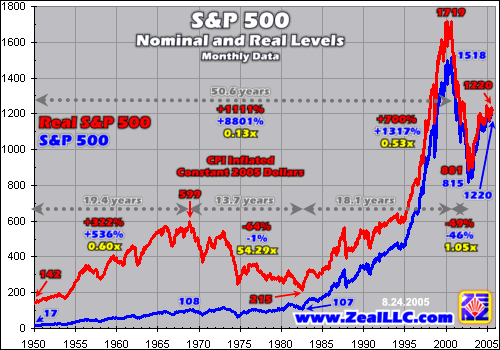Paulson, Bernanke, and Dodd throw their heads together and Paulson ex CEO of goldman sachs says "We are going to work through this problem just fine," "These things take a while to play out," Dodd tells bernanke to use "all the tools available"
weren't they the same ones telling us housing would rebound soon and the subprime crisis would be contained...hmm....maybe they are right this time...
--------------------------------------------------------------------------
AP
Paulson Seeks to Calm Jittery Investors
Tuesday August 21, 6:31 pm ET
By Jeannine Aversa, AP Economics Writer
Paulson Seeks to Calm Jittery Investors, Says Country Will Make Way Through Credit Crunch
WASHINGTON (AP) -- Treasury Secretary Henry Paulson attempted to soothe jittery investors on Tuesday, insisting the United States will safely get through a spreading credit crisis that has unhinged Wall Street.
"We are going to work through this problem just fine," Paulson said. He urged patience as investors reassess their appetite for risk, saying there isn't a "quick solution" to the matter. "These things take a while to play out," the secretary said.
Paulson commented as the Federal Reserve, trying to further stabilize the reeling markets, pumped another $3.75 billion into the financial system Tuesday. It was the latest in a series of cash transfusions that have topped more than $100 billion since last week.
In another development, Senate Banking Committee Chairman Christopher Dodd urged Federal Reserve Chairman Ben Bernanke to use "all the tools available" so that a spreading credit crisis doesn't undermine the national economy.
Dodd, a Connecticut Democrat who is seeking his party's presidential nomination, did not specifically ask Bernanke to lower a key interest rate in a meeting he had privately with the Fed chairman and Treasury Secretary Henry Paulson.
Dodd, D-Conn., did, however, urge policymakers to do all they could to ease the credit crunch, he said after the meeting.
In the past several weeks, financial markets in the United States and around the globe have been shaken by fears about spreading credit problems that started with home mortgages. Investors are worried that these problems will infect the larger financial system and possibly hurt the U.S. economy. As a result, stocks on Wall Street have careened wildly.
Paulson, however, stressed Tuesday in an interview on CNBC that the economy remains in fundamentally good shape and suggested that it should be should be able to weather the financial storm.
At a news conference concluding a North American summit with the leaders of Canada and Mexico Tuesday, President Bush said the U.S. economy is strong.
"The fundamental question is: 'Is there fundamental liquidity in our system as people readjust risk?' and the answer is, 'Yes, there is,' " he said.
Before taking over the Treasury helm last year, Paulson was a top executive at Goldman Sachs, a huge Wall Street firm.
Credit problems have spread beyond home mortgages to those with blemished credit histories and are now troubling other borrowers. Nervous lenders have tightened credit standards, making it more difficult for individuals and companies to find financing.
Against this backdrop, Goldman Sachs last week pumped $2 billion into one of its struggling hedge funds and was asking other investors to put in another $1 billion. BNP Paribas, France's largest bank, two weeks ago froze three funds that had invested in the troubled U.S. mortgage market.
Investors, meanwhile, have been plowing money into safe havens such as short-term Treasury bills, driving down yields sharply.
The central bank last week sliced its discount rate -- the rate it charges banks for direct loans -- to 5.75 percent.
Fed officials also have been urging banks to borrow from the Fed's so-called discount window, trying to remove a stigma that is a place for banks to turn to only in times of emergency or last resort. The Fed is now allowing loans of up to 30 days versus the normal one day.
New York Fed President Timothy Geithner and Donald Kohn, the second-highest ranking person on the Federal Reserve's Board of Governors, participated in a conference call last Friday with major investment banking firms. They suggested use of the discount window would be viewed as a sign of strength.
Paulson said he has "great confidence" in the Fed but refrained from saying whether its actions thus far will be sufficient.
The Treasury chief did say the Fed's actions will make it easier for market players to "focus on risk" and get themselves straightened out.
On Capitol Hill, some Democrats would like to see mortgage giants Fannie Mae and Freddie Mac -- which are recovering from accounting scandals -- have a larger role in the mortgage market. Some would like to see the two mortgage companies buy "jumbo" mortgages of more than $417,000.
The Bush administration doesn't like the idea. Paulson said that raising investment caps on Fannie Mae and Freddie Mac "doesn't do much of anything."


 hno:
hno:





